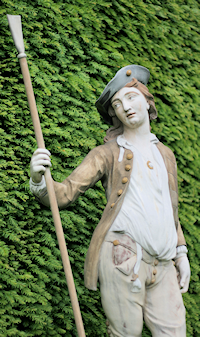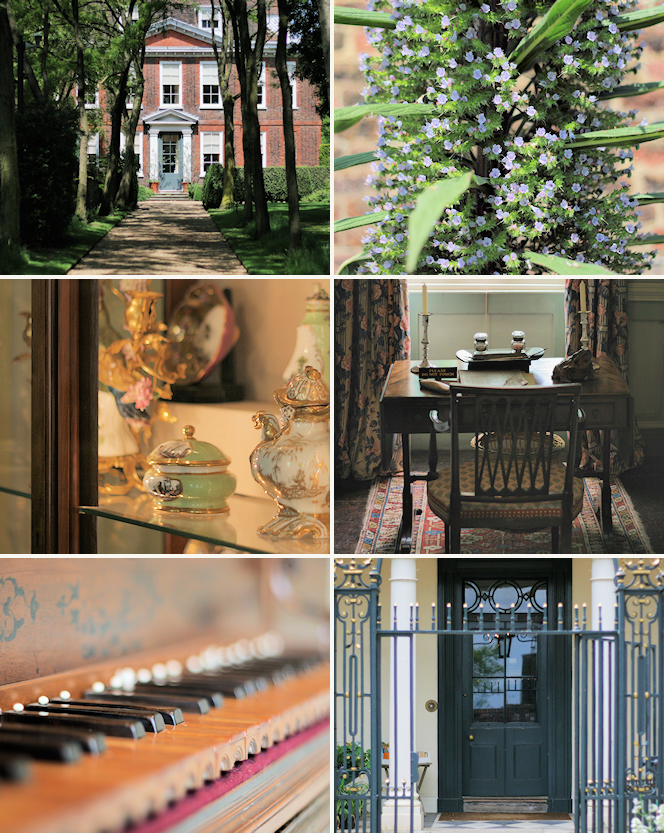Fenton House
Architecture, art, ’arpsichords and apples
Fenton House, Hampstead Grove, Hampstead

Philip Ibbetson* Fenton was born in 1731 at his uncle’s Lancashire manor house, Hoghton Tower, and he grew up in Yorkshire. His parents were well-off and he got richer in Riga (now the capital of Latvia), exporting Russian produce to London. Fenton acquired the property that now bears his name in 1793, a century after it had been built (as Ostend House) by an unidentified architect for an unknown client. The retired merchant spent the last 13 years of his life at Fenton House and was buried in the churchyard of St John-at-Hampstead in August 1806.
Described by Pevsner as reflecting “the straightforward domestic classicism of the William and Mary period”, Fenton House is a compact, square structure, originally with a southern entrance and four rooms on each of its main two floors. When James Fenton inherited the property in 1807 he added a new entrance on the east side (shown bottom right) and united the south rooms on the ground floor, creating a full-width dining room.
The last private owner of Fenton House was Lady Katherine Binning (née Salting), who was the niece of George Salting, a Victorian art connoisseur who left most of his vast collection to the National Gallery, the British Museum and the V&A on his death in 1909. The residue of his estate went to Lady Binning, who was almost as avid a collector as her uncle had been. She bought Fenton House in 1936 and filled it with fine furniture, European and oriental china and works of art, including a surprising variety of paintings, as well as tapestries and other needlework.
On her death in 1952, Lady Binning bequeathed to the National Trust the house and its contents. These were supplemented Major George Benton Fletcher’s collection of early keyboard instruments, so that almost every room is now graced by a virginal, clavichord, harpsichord or spinet.
Up in one of the attic rooms there’s a door to a balcony with a marvellous view across London – and down into the grounds, which are almost as delightful as the house itself. There’s an expansive walled garden with formal walks and a secluded sunken area, a 300-year-old apple orchard and a kitchen garden. The garden’s statue of a shepherd (shown above) was cast in lead by John Cheere in 1735.

Fenton House and Garden, Hampstead Grove, London NW3 6SP
Phone: 020 7435 3471
Email: fentonhouse@nationaltrust.org.uk
Website: Fenton House
Open: March to October: Wednesday–Sunday and bank holidays 11am–5pm
November to February: selected weekends only (see the website)
Admission: £6.50 (adults), £3.00 (children), £16.00 (families)
Nearest station: Hampstead (Northern line)
NearbyKeats House
* George du Maurier, who lived at 28 Hampstead Grove, wrote Peter Ibbetson in 1891. Did du Maurier borrow his hero’s surname from his former neighbour?

